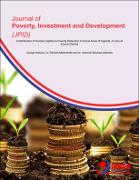| dc.description.abstract | The study was about the contribution of human capital onpoverty reduction in rural areas of Uganda taking Kisoro district as a case study. In Uganda, poverty in rural areas had remained a challenge as depicted by 31 percent of population below poverty line as of financial year 2016/2017 (UBOS, 2018) having risen from 22.8 percent in financial year 2012/2013 (MoFPED, 2014). In Kisoro district, poverty was high as manifested by low household access to electricity (7.6%), piped water (33.7 %), high illiteracy levels, food insecurity, poor housing conditions where 84.6% of households lived in semi-permanent dwelling units (UBOS, 2017). The purpose of the study was to examine how human capital could contribute to poverty reduction in rural areas of Uganda takingin Kisoro districtas a case study. The study was carried out in Kisoro district on 391 respondents against the targeted 400 which represented 97.8 % response rate. The respondents included farmers, district technical staff, business entrepreneurs, agricultural industrialists, political, religious and opinion leaders. The study triangulated both quantitative and qualitative approaches and a cross-sectional survey was used. Data collection methods used included: survey, interviews,observations and review of primary and secondary documents; while the tools used were self-administered questionnaires, interview guide, interview schedule, observation plan and its checklist, a camera and a recorder. The study findings established that education could significantly ensure rural poverty reduction in Kisoro district, with a positive and significant relationship between them (r = 0.415, p< 0.05). Education also explained 23.2% of the contribution on rural poverty reduction. Training had a significant effect on rural poverty reduction in Kisoro district with a positive and significant relationship between them (r = 0.267, p< 0.05). Training also explained 9.1% contribution to rural poverty reduction. There was significant relationship between human capital and rural poverty reduction in Kisoro district. It was concluded that human capital had a great contribution towards poverty reduction in rural areas. The study recommended that; public education, research and development, science and technology and enabling policies could sustainably be promoted for enhanced productivity, poverty reduction and development. | en_US |


